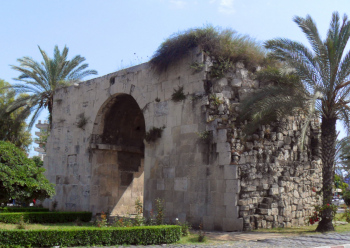There is the same solitude and silence in the intolerable heat and dust of the summer. Then, as now, the mothers and children of Tarsus went out in the cool evenings, and looked from the gardens round the city, or from their terraced roofs, upon the heights of Taurus. The same sunset lingered on the pointed summits. The same shadows gathered in the deep ravines.
The river Cydnus, which ran through Tarsus, has suffered some changes in the course of 1800 years. Instead of rushing, as in the time of Xenophon, like the Rhone at Geneva, in a stream of two hundred feet broad through the city, it now flows idly past it on the east. The Channel, which floated the ships of Antony and Cleopatra, is now filled up. But its upper waters still flow, as formerly, cold and clear from the snows of Taurus and its waterfalls still break over the same rocks when the snows are melting.
We find a pleasure in thinking that, in Tarsus, the footsteps of the young Apostle often wandered by the side of Cydnus, and that his eyes often looked on these falls. We can hardly believe that he who spoke to the Lystrians of the "rain from heaven," and the "fruitful seasons," and of the "living God who made heaven and earth and the sea" (Acts 4:15, 17) could have looked with indifference on beautiful and impressive scenery.

Gamaliel was celebrated for his love of nature. Paul, the young Jew who was destined to be his most famous pupil, spent his early days in the close neighborhood of much that was well adapted to foster such a taste. Or if it be thought that in attributing such feelings to him we are writing in the spirit of modern times, and if it be contended that he would be more influenced by the realities of human life than by the impressions of nature, then let the youthful Saul be imagined on the banks of the Cydnus.
Saint Basil says, that in his day Tarsus was a point of union for Syrians, Cilicians, Isaurians, and Cappadocians. To these we must add the Greek merchant and the agent of Roman luxury. And one more must be added, the Jew, even then the pilgrim of commerce, trading with every nation, and blending with none. In this mixed company Saul (Paul), at an early age, might become familiar with the activities of life and the diversities of human character, and even in his childhood make some acquaintance with those various races, which in his manhood he was destined to influence.